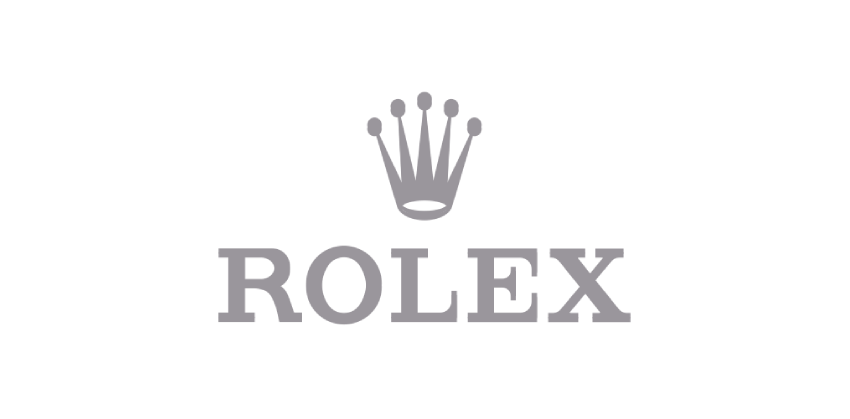KIMBERLEY PROCESS
LE 4C
WHAT IS A DIAMOND?
The diamond is made up of carbon, with covalent atomic bonds, making it the hardest material in the world.
The hardness of the materials refers to the ability to resist abrasions and scratches, not the ability to break, so we can say that the diamond is hard but at the same time not indestructible.
The diamond is born only when particular temperature and pressure conditions occur: 1300 ° -2000 ° C, 70 tons / cm2.
These conditions can only be found at depths greater than 150 km, and the time required for its formation is very long, from 800 million years for the youngest diamonds to 3.3 billion years for the oldest.
The diamond is therefore an amazing millennial history of growth and perseverance concentrated in a few millimeters of surface.
THE 4C
Each diamond has certain distinctive characteristics: the so-called 4Cs: cut, clarity, color, carat which are the globally accepted standards for evaluating the quality of a diamond.
CUT
The cut is determined by the way in which the facets of a diamond interact with the light.
If the cut reflects very precise measurements and proportions, the optical characteristics of the diamond are enhanced to the maximum, ensuring an almost total reflection of light from the inside of the stone towards the outside.
In addition to the proportions, the success of a brilliant cut is also determined by the asymmetry of the cut, which can be very good (VG), good (G) or medium (Medium).
A further element considered in evaluating the accuracy of the cut is polishing. During the cutting operations the veneers are polished so that all traces of the machining are eliminated.
However, it is possible that some surface lines remain on the veneers, called polishing traces.
The finishing and polishing do not affect the purity of the stone.
The set of proportions, symmetry and polishing define the so-called “finish”.
The cut can also refer to the shape that the diamond can take. The type of cut can vary the price of the diamond, the most expensive is the round cut while the cheapest is the radiant cut.

Why is diamond cut so important?
If a diamond is badly cut, it will appear dull even if it has a high color and degree of clarity. If a diamond is cut well, it will reflect and refract light for maximum brightness and brilliance.
What affects the quality of the diamond cut?
The “cut” is the only one of the 4Cs that depends on human hands. Two diamonds can have the same purity, color and carat weight: but the cut is what determines whether or not one is superior to the other. In other words, the cut is responsible for the quality and degree of brilliance of a diamond. There are three factors that determine the cut of a diamond:
Cutting precision: how dimensions and angles refer to the different parts of the stone
Symmetry
How precisely the various facets of a diamond line up and intersect
Polishing
The details and positioning of the facets and the external finish of the diamond
The industry’s highest cut grade, triple excellent, is awarded to a diamond with an “excellent” score in terms of cut accuracy, symmetry and polish. ù
PURITY
Purity is a measure of the rarity of the stone.
In diamond, the more the stone is free of inclusions, the higher its value.
An inclusion can be a crystal “housed” within the gem, a crack or other.
The factors that influence the expert’s final decision are:
- the number of inclusions,
- their grandeur,
- the position that they have inside the stone (one inclusion affects more on the table than one on the crown or belt),
- contrast (some inclusions, such as feathers, are very visible in some positions, while in others they can be practically invisible; crystals on the other hand usually have the same contrast in all positions);
- the color (we find black, white and/or rarely red inclusions).
DIAMOND GRADING SCALE:
- IF: “internally flawless”, which means there is no inclusion.
- VVS1 – VVS2: “very very slightly included, which means that the inclusions are only visible with the use of a microscope, with a 20x – 30x magnification.
- VS1 – VS2: “very slightly included”, which means that the inclusions are only visible with the microscope or the “jeweller’s lens”, with a 10x magnification.
- SI1 – SI2: “slightly included”, which means that the inclusions begin to be visible even to the naked eye.
- I1 – I2 – I3: “included”, which means that the inclusions are clearly visible to the naked eye.
Is diamond clarity really important?
A diamond with a poor degree of purity has more inclusions, which directly affect the brilliance. Since inclusions hinder the refraction and return of light, the lower the degree of purity, the more “milky” and opaque the diamond will appear.
COLOR
Color refers to the natural tint inherent in white diamonds.
During the growth of the diamond, within its atomic structure, atoms of other elements can be inserted which affect the color of the stone.
If the stone is composed of only carbon atoms, its color is “white”.
The presence of nitrogen atoms gives the stone a more or less intense shade of yellow.
The scale set by the Gemological Institute of America is used to determine to which degree of color a stone belongs.
What is the color of the diamond?
The more “colorless” a diamond is, the rarer it is. The industry standard for color grading is to rate each stone against a master set and assign a letter grade from “D” (colorless) to “Z” (light yellow).
Is the color of the diamond important?
Color is the second most important of the 4Cs because the degree of color directly affects the appearance of the stone. Diamonds with a poor color grade may appear slightly yellow instead of the desired brilliant white.
CARATS
The carat denotes the weight of a diamond. The carat is the unit of measurement of diamonds and precious stones in general (sapphires, rubies, emeralds, etc.) and is written ct. A carat is divided into 100 cents called points and corresponds to 0.20gr; for a stone weighing 0.45ct, it is said to be “45 points”. The adoption of the carat as a unit of measurement of the weight of diamonds dates back to the mists of time: it seems that the first precious merchants weighed diamonds using carob seeds (hence the term carat) as a reference.
What is a diamond carat?
The carat indicates the weight of a diamond, not the size. One carat equals 0.20 grams. Diamond carat charts Carat weight can appear differently in different diamond shapes such as round brilliant, princess, pear, oval, cushion, marquise, emerald, radiant or heart. A diamond can have a greater carat weight without appearing larger and two diamonds of the same carat weight can vary in size if one is cut deeper than the other. In other words, it is important to note that carat weight does not necessarily denote size. Is a higher carat weight better? Carat weight alone does not determine the value of a diamond. For example, two one-carat stones can vary greatly in price when clarity, color and cut are taken into consideration. When this is understood, it is clear that large diamonds of unmatched quality are rare.
KIMBERLEY PROCESS
THE GEMMOLOGICAL CERTIFICATION
All of our diamonds equal to or greater than 0.30 ct. they have the international GIA or IGI certifications.
THE DIAMOND CERTIFICATIONS
An authentic diamond must always be accompanied by the certification issued by a professional gemologist. The certificate is a real identity card of the stone and summarizes its weight (carat weight), color, size and evaluates the cut.
If we want our jewel to be of proven quality, it is important that the stone is certified by competent laboratories and accompanied by a certificate issued by a professional gemologist.
The certification of a diamond offers ease in the evaluation and comparison with other stones. Reading the certificates it is in fact quite simple and fast to evaluate and compare two stones.
The Gemmological Identification Certificate is a declaration containing a series of data, characteristics and classification of diamonds, extrapolated from laboratory analysis.
These analyzes are performed by qualified technicians, gemologists enrolled in the register, with the aid of special tools.
Consumer protection is therefore absolute as it confirms the authenticity and sets the specific features of the stones objectively and competently.
Not to be underestimated is the use for insurance purposes; in fact this document is essential for a correct calculation of a possible insurance premium or in the case of a refund request
G.I.A. certification
The American Gemological Institute (G.I.A.) was founded in 1931 in Los Angeles, California. The peculiarity of this institute, which has made it known throughout the world, is that it has created and introduced today’s International Classification System. In fact, the method created is known as the “4C”, that is: Cut (Cut), Clarity (Purity), Color (Color) and Carat (Carat). These are the key elements for valuing diamonds around the world.
The peculiarity of the G.I.A. is its certificate, valid internationally and is among the most prestigious ones. Their laboratory is responsible for analyzing the stone and laser marking the certificate number on the belt. It is the main internationally recognized certification entity for the classification of colored diamonds.
For more information visit the G.I.A. (https://www.gia.edu).
I.G.I. certification
I.G.I. certified diamonds are those evaluated by the International Gemological Institute which is based in Antwerp, and that is why this beautiful city is considered the world capital of diamonds. The institute has other branches around the world. A team of gemologists analyzes purity, color, cut, brilliance, shapes and sizes, releasing the I.G.I. The laboratory seals the diamonds and sets no limits on carat weight.
For more information, visit the I.G.I. website (https://www.igi.org)
The Kimberley Process
The Kimberley Process is a certification agreement designed to ensure that profits from the sale of diamonds are not used to finance civil wars, helping to protect the legitimate trade in rough diamonds.
The major countries of the world and the multinationals producing diamonds participate, which guarantee, under the aegis of the UN, that the profits from the diamond trade are not used to finance civil wars.
All the diamonds distributed by us respect these credentials and the certificates of origin attest the entire path of the stones, guaranteeing their origin and all the steps.
37 countries are part of this agreement, organizations such as the World Diamond Council and the multinationals that extract and trade diamonds.
In order to become part of this agreement, some requirements must be met:
- that the diamonds from the country are not intended to finance rebel groups or other organizations that aim to overthrow the government recognized by the United Nations.
- that each exported diamond is accompanied by a certificate proving compliance with the Kimberley Process scheme
- that no diamonds are imported from, or exported to, a non-Kimberley Process member country.
Ethical diamonds: diamonds free to be worn
Buy with confidence our diamonds that are subjected to the Kimberley Process: rough diamonds are sealed in tamper-proof containers and we provide certification that they come from sources without conflict relationships, through a rigid system consisting of non-documented documents, forgeries and serial numbers. Documentation is re-confirmed whenever a rough diamond crosses an international border.
For more information visit the Diamond Facts website (http://www.diamondfacts.org/?lang=it).
All of our diamonds equal to or greater than 0.30 ct. they have the international GIA or IGI certifications.









